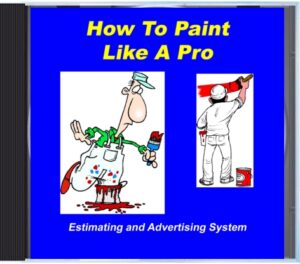The painting industry is a significant part of the construction and home improvement sector, contributing not only to the aesthetic appeal of buildings but also to their longevity and protection.
Painting contractors play a vital role in this industry, offering their expertise in both residential and commercial projects.
In this post, we will delve into the world of painting contractors, examining the factors that influence their profitability, the challenges they face, and the strategies they employ to maximize their earnings.
The Painting Industry: An Overview
Before delving into the profits of painting contractors, it’s essential to understand the broader context of the painting industry. This industry encompasses a wide range of services, including interior and exterior painting, decorative finishes, wall covering installation, and surface preparation.
The demand for painting services is closely tied to the health of the real estate and construction markets, making it susceptible to economic fluctuations.
Factors Influencing Profitability
- Market Conditions:
The profitability of painting contractors is closely linked to the overall health of the construction and real estate markets. During economic downturns, construction projects often decline, leading to reduced demand for painting services. Conversely, economic growth and increased construction activity can boost demand for painting contractors, positively impacting their profitability.
- Competition:
Competition within the painting industry can be intense, especially in densely populated areas. Painting contractors often need to compete on price, which can squeeze profit margins. However, contractors who focus on quality, reputation, and specialization can command higher prices and maintain profitability.
- Cost of Materials:
Painting contractors rely heavily on materials such as paint, brushes, rollers, and drop cloths. The cost of these materials can fluctuate, affecting a contractor’s bottom line. Additionally, the choice of materials can impact profitability, as higher-quality paints and tools can lead to better results and customer satisfaction.
- Labor Costs:
Labor is one of the most significant expenses for painting contractors. Profits can be eroded if labor costs are not effectively managed. Skilled painters often command higher wages, but their expertise can lead to more efficient and higher-quality work, potentially justifying the higher costs.
- Seasonal Variations:
The painting industry is also subject to seasonal variations in demand. For example, exterior painting projects are more common during the warm months, while interior projects can occur year-round. Contractors need to manage their cash flow effectively to navigate these seasonal shifts and maintain profitability.
Challenges Faced by Painting Contractors
- Economic Downturns:
As mentioned earlier, economic downturns can significantly impact the profitability of painting contractors. During recessions, construction projects are often delayed or canceled, leading to reduced demand for painting services. Contractors must adapt by diversifying their services or seeking out niche markets to mitigate the effects of economic downturns.
- Pricing Pressure:
Intense competition within the industry can lead to pricing pressure. Some contractors may resort to underbidding competitors, leading to lower profit margins. To combat this, successful painting contractors focus on offering superior quality, excellent customer service, and added value to justify higher prices.
- Labor Shortages:
The painting industry, like many other skilled trades, faces labor shortages. Finding skilled painters can be challenging, and competition for experienced workers can drive up labor costs. Contractors must invest in training and development programs to cultivate a skilled workforce and maintain profitability.
- Seasonal Nature of the Work:
The seasonal nature of painting work can make it challenging for contractors to maintain a consistent income throughout the year. Many contractors offer other services, such as carpentry or remodeling, during the off-season to keep their teams busy and generate additional income.
- Safety and Compliance:
Compliance with safety regulations is essential in the painting industry. Contractors must invest in safety training, equipment, and insurance to protect their workers and avoid costly accidents or legal issues. These additional expenses can impact profitability.
Strategies for Maximizing Profits
- Specialization:
Some painting contractors find success by specializing in a specific niche, such as historical restoration, faux finishes, or commercial properties. Specialization allows them to command higher prices and attract clients seeking specific expertise.
- Marketing and Branding:
Effective marketing and branding efforts can help painting contractors stand out in a crowded market. Building a strong online presence, showcasing past projects, and collecting customer reviews can instill confidence in potential clients and justify higher pricing.
- Efficient Project Management:
Streamlining project management processes can help reduce labor costs and improve profitability. Utilizing project management software, optimizing scheduling, and tracking job costs can lead to more efficient operations.
- High-Quality Materials:
Investing in high-quality paints and materials can lead to better results and customer satisfaction, allowing contractors to charge premium prices. Additionally, using eco-friendly and sustainable products may appeal to environmentally conscious customers.
- Customer Relationship Management:
Maintaining positive relationships with clients can lead to repeat business and referrals. Happy customers are more likely to recommend a painting contractor to others, reducing the need for costly marketing efforts.
- Diversification:
Diversifying services, such as offering carpentry or drywall repair in addition to painting, can help contractors maintain a consistent income throughout the year. It also allows them to cross-sell services to existing clients.
Conclusion
The profitability of painting contractors is influenced by various factors, including market conditions, competition, labor costs, and seasonal variations. To thrive in this industry, contractors must navigate challenges such as economic downturns, pricing pressure, labor shortages, and safety compliance.
Successful painting contractors employ strategies like specialization, effective marketing, efficient project management, and customer relationship management to maximize profits. By staying adaptable, providing high-quality work, and continually improving their operations, painting contractors can achieve long-term profitability in this dynamic industry.
 Make Money Faster, Easier in Your Painting Business http://AmazingStarMurals.com
Make Money Faster, Easier in Your Painting Business http://AmazingStarMurals.com
